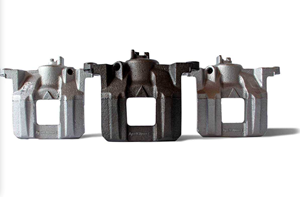Controlling the Quality of Trivalent Chromium Passivates
Atotech’s Andrew Pfeifer presents four options for controlling contaminates in passivate baths.
Q: How do I control the quality of trivalent chromium (Cr3) passivates?
A: Contaminants in passivate chemistry has been an issue in the plating industry for decades. Zinc and iron are the primary contaminants, due to the electrolyte material and substrate. The presence of these materials in passivate baths impacts the efficiency, color and quality, ultimately leading to the occasional disposal of passivate material that would otherwise be acceptable.
In order to address this issue, there are a number of options that can be considered:
Feed and bleed: Feed and bleed, simply put, is accomplished by attaching a feed pump to the replenishment passivate material, so it can be pumped into the passivate at a pre-determined feed rate. The excess passivate solution in the process tank will then pass to an over-flow pipe or weir and discharge to waste treatment. In order to use this method, historical data on the growth of zinc and iron would have to available to determine the appropriate feed rate. Although not perfect, feed and bleed offers some level of consistent performance aspects, however, due to the unpredictable introduction of contaminants, this approach offers only minimal level of improvement.
Dump and remake: This conventional method of controlling passivate chemistry has been exercised for decades, however it has the least favorable impact on operating costs and the environment. After a new chemistry makeup, various lab techniques are employed to monitor pH, concentration and metallic contamination. Atomic absorption, as well as inductively coupled plasma, are often used to control passivate concentration and metallic impurities. The upper limit for metallic contamination is established using historical data, and once it is reached, the bath is discarded and a new bath made up. Although this method is better than no method, the passivate quality gradually declines as the contaminants grow. The result is inconsistent performance, including poor color control and deteriorating corrosion performance.
Proprietary chemical additives: Proprietary additives are available to control the zinc and iron contamination by utilizing precipitation methods or chelators, respectively. These tools can be moderately successful in combating metallic contamination, but there are negative effects with both methods. When using precipitation methods to control zinc contamination, there is the danger of precipitating other metal ions, such as cobalt, which are key to the proper performance of the passivate layer. Also, the introduction of strong chelators into the passivate solution to control the effects of iron contamination can create many issues with waste-treatment systems, resulting in high metal concentrations in wastewater effluents.
High pH and fluoride-free passivates: The advent of passivates operating at a higher pH range have been a welcome introduction to the finishing community. Advances in alternate chemistries that are free of fluoride and operate at higher pH reduce the attack on the zinc or zinc alloy deposit and any exposed steel substrate, resulting in slower growth of both zinc and iron in passivates. Although the passivates still change like the other passivates, slower migration means they last longer and perform better during their usable life.
Noticing the impact that passivate quality had on customers’ quality and cost positions, some chemical manufacturers embarked on a method to alleviate this pressure more than two decades ago. The result was the development of a fully automatic ion-exchange system that is integrated into the passivate bath. Through a system of filters and resins, this equipment removes a variety of contaminants from the passivate bath, resulting in the following benefits to applicators and end users:
- Extension of bath life. Contaminants are continuously removed, therefore significantly extending the life of the bath (delaying/potentially eliminating the need to dump a bath).
- Improved quality. Continuous removal of contaminants allows applicators to achieve more stable performance results compared to previous results without the unit.
- Wastewater minimization. Frequent batch treatments of the passivate can be eliminated. The passivate bath containing fewer contaminants leads to a positive impact to downstream processes (rinses, sealers), and minimizes the quantity and contaminant level of the wastewater that is generated.
- Throughput improvement. The time required to monitor, adjust and change over passivate chemistry is significantly reduced/eliminated, resulting in more throughput on a consistent basis.
Andrew Pfeifer is business manager, CPT, at Atotech USA. Visit atotech.com.
Related Content
How to Choose the Right Coating for Fasteners
Choosing the proper coating for fasteners can help with performance by improving durability and lifespan. In this helpful Ask the Expert article, Mark Schario of Columbia Chemical offers advice for choosing the right fastener coatings.
Read MoreHow to Choose Between Sulfate and Chloride-Based Trivalent Chromium
There are several factors to consider when choosing between sulfate and chloride-based baths for trivalent chromium plating. Mark Schario of Columbia Chemical discusses the differences and what platers should keep in mind when evaluating options.
Read MoreCleaning, Pretreatment to Meet Medical Specs ISO 13485 or FDA 21 CFR820
Maximilian Kessler from SurTec explains new practices for industrial parts cleaning, metal pretreatment and decorative electroplating in the medical device industry.
Read MoreRead Next
Episode 42: An Interview with Robin Deal, Hubbard-Hall
Hubbard-Hall wastewater treatment specialist Robin Deal discusses the latest trends in wastewater management.
Read MorePowder Coating 4.0: Smarter, Faster, More Efficient and Connected
New tools reduce cost and waste, lower manufacturing footprint of powder coating operations.
Read MoreThe 2024 Ford Mustang: All the Colors Available
Although Chevrolet has announced the end of the Camaro and Dodge is offering “Last Call” editions of the Charger and Challenger, the Ford Mustang is launching to its seventh generation.
Read More

























